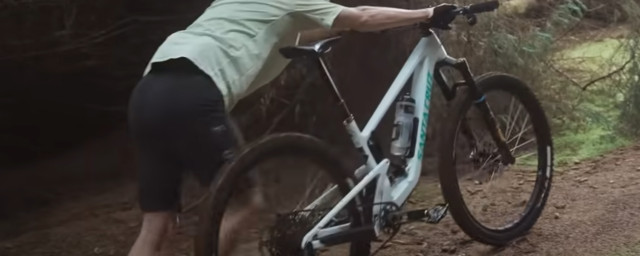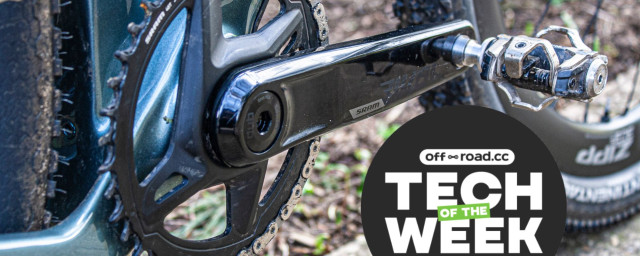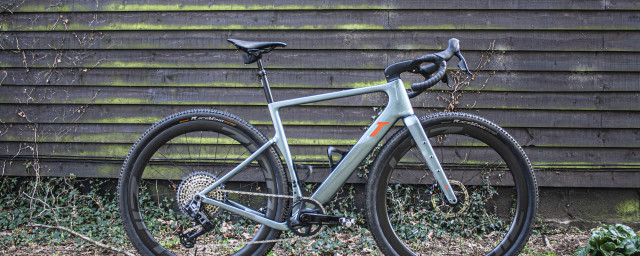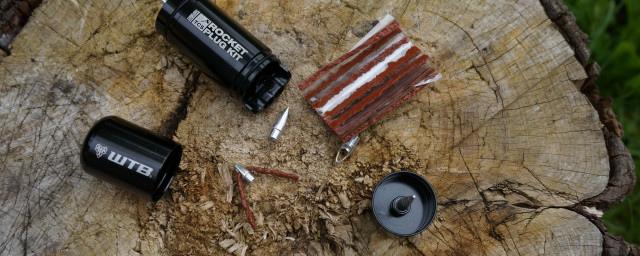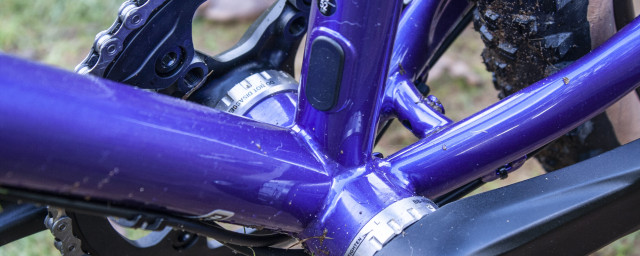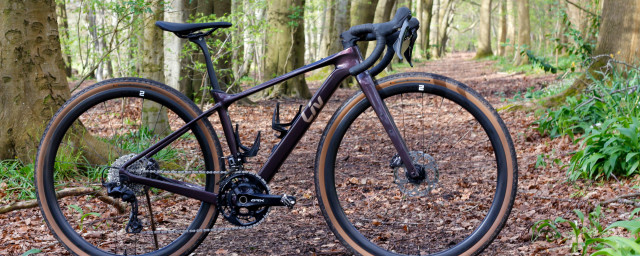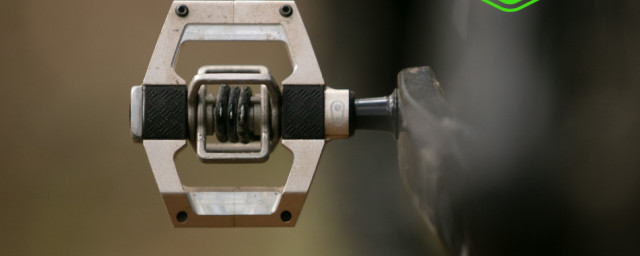SRAM’s Transmission has added a direct-mount derailleur and a host of other new technologies, the result of which has turned the traditional derailleur concept on its head. And it didn’t take long for SRAM to bring this tech to its more accessibly priced GX offering. Although it’s still a few hundred pounds pricier than the regular Eagle AXS and most other drivetrains currently on the market for that matter, GX Transmission elevates the drivetrain experience, ushering in consistent shifting under load in an essentially maintenance-free package.
- SRAM MTB drivetrains 2023: SX to XX SL explained
- Wait... How much is the new SRAM T-Type kit?
- SRAM NX vs GX: which drivetrain is best for you?
SRAM GX Eagle AXS Transmission - Technical details
SRAM GX Transmission is the latest drivetrain that advances shifting tech to a new level. The brand touts it as the most durable and dependable drivetrain it has created.
To boost durability, GX T-Type’s mech gets a few changes from its pricier siblings, namely the battery location, which now sits on top of the derailleur rather than at the back, resulting in a much tidier aesthetic. It makes more sense, too, to protect the battery against any potential strikes while riding. The mech is also rebuildable with replaceable skid plates and a whole two-piece outer link. The cage can be removed without tools, which makes it easily upgradable to a cage from one of the other T-Type drivetrains or something from a third party, such as CeramicSpeed’s OSPW X to save some watts. GX T-Type’s gearbox has been tweaked slightly, too, for even better protection against impacts. But note, because of the changes found on the GX mech, the skid plate and outer link cannot be swapped with components from the other Tranmission drivetrains.
Like the derailleur, the cassette boasts subtle changes, too, but SRAM says that it’s what’s responsible for GX T-Type’s ability to shift under load. Those small changes come in for form of a slightly revised tooth profile, with many cogs featuring SRAM’s narrow wide profile and fewer shifting ramps across the cassette, which means that GX T-Type actually works in a slightly different way than previous drivetrains, apart from the cage.
Instead of allowing the derailleur to force the chain over several cogs, increasing wear as it slides over the teeth and stretching the chain laterally over an extreme angle, the chain is kept in total engagement with the cassette as it moves from one cog to another. The idea of this is that it reduces unnecessary wear on the drivetrain but this is also what allows for smooth shifting under much greater load than conventional drivetrains, meaning that riders can shift basically whenever they want without any interruption to power transfer. This is especially beneficial to e-MTBers who regularly output a lot of power.
As we’ve come to expect from SRAM’s cassettes, this one gets a 520 per cent range but it’s been altered slightly with larger 38 and 44T cogs to achieve more even steps at the low end of the cassette. There’s also a red Setup Cog to help with installation and it’s designed for a 55mm chain line. It’s put together using SRAM’s Pindome tech for gears one to eight whereas nine to 12 use a single-piece mini cluster. Of course that 520 per cent range goes over 12 gears from 10 teeth in size up to 52T and the cassette fits SRAM’s XD freehub driver body.
Even the chain has had some attention. Fitting in with the rest of the T-Type line, the GX T-Type chain gets the flattop tech seen on the rest of the range that’s often seen on road bikes which SRAM claims makes for quieter operation. Its inner links are Chrome hardened and the outer links are finished in nickel with a silver finish. As standard, there are 126 links and it comes with a PowerLock 12s T-Type connector link. The pins are solid, too.
The GX T-Type crank might be the least exciting part of the drivetrain and, compared to the likes of XO and XX, it looks more basic. However, the brand has built this crank to balance form and function, while making it easier on the wallet. What is cool about this crank is that it comes with a pair of bash guards which are independent of each other, so you can run both, one or none at all depending on your preference. The crank follows SRAM’s DUB Standard for easy fitment.
This particular drivetrain came with the AXS POD Ultimate Controller. It’s sorted with SRAM’s click-and-fire two-button design that’s been crafted to require what the brand reckons is the ‘ideal amount of rider input to activate’. Its buttons are interchangeable and its design is flippable, so riders can choose to shift their gears from the left or right-hand side of the bar.
Altogether, the drivetrain with 170mm cranks and the bottom bracket with spacers included weigh in at 2,042g. To put that in context with the rest of the Transmission range, XO weighs 1,891g and XX tips the scale at 1,722g.
SRAM GX Eagle AXS Transmission - Setup
Installing GX T-Type fresh on a bike isn’t quite as straightforward as a mechanical or AXS Drivetrain setup but, while there are a few extra steps, it’s incredibly easy to get accurate shifting straight out of the gate. Instead of bolting a mech onto a hanger, shoving a cable through it, and sorting the indexing and cable tension, it’s a case of installing everything loosely, making some minor adjustments, and torquing everything to spec. But it’s important to be precise, and following the instructions is worthwhile, given that installation is so different.
In a nutshell, you start by removing the UDH and installing the bushing frame insert, then hang the derailleur, only snugging the bolt and then loosening the bolt by a turn. Then the wheel goes in with the axle also snugged, then loosened. This is when the chain gets involved. With the chain sitting on the 21T or 24T gear (sitting on either side of the red ring in the cassette) you move the derailleur cage into setup mode. This mode isn’t the same for all bikes, so be sure to check which orientation the setup mode determining flip chip is in – flip if necessary.
This is where b-tension is applied and it’s super easy. Simply pull back on the mech to take up any slack in the chain and tighten the mounting bolt as it’s being pulled back. There’s a mark on the mech and the inner collar which should be lined up, then you’re ready to go.
It is a smidgeon more complicated but that’s mostly because it’s a new system to learn. However, achieving good shifting from the outset is foolproof and you’ll be spending no time messing with limit screws, b-tension screws, or cable tension.
There is, however, Microadjust which allows the user to precisely adjust the derailleur’s position under a gear by 0.25mm per adjustment. This works for each gear independently, using either the shifter or through the AXS app. Microadjust can be likened to a mini-indexing that when set up properly, quietens down the drivetrain and results in smoother shifts.
SRAM GX Eagle AXS Transmission - Performance
With GX Transmission being such a claimed advancement compared to regular drivetrains, I decided that the best way to test it was over a longer period than usual to keep tabs on its consistency through a mix of conditions and, of course, durability. This was installed in July, a couple of weeks ahead of its launch and I’ve been riding it every weekend for around 11 to 15km a time with some uplift-assisted rides thrown in for good measure. And that's through all kinds of dust and muck that the UK can through at it.
Now, the GX T-Type still does the same thing as any chain and derailleur-operated drivetrain out there. It moves a chain around a bunch of cogs on a cassette suit to riding speed, but, Transmission goes about it in a slightly different way as mentioned before. But when pedalling, it’s noticeably smooth and beautifully quiet.
There is an elephant in the room. Its shifts are slower than regular mechanical and AXS drivetrains and that’s a direct result of Transmission’s new way of shifting that ensures maximum contact between the chain and cassette as it articulates. Unlike traditional setups, T-Type transfers the chain purposefully from gear to gear, keeping the chain engaged with the cassette’s teeth at all times. This translates into slower shifting and the speed per shift can change depending on where the chain is on the cassette as the shifting ramp distance changes. If it’s at the low end, or easier area, shifts are slower but things speed up in the smaller gears.
From gear to gear, the slower speed shift isn't noticeable and actually, it's rather prompt. Where it’s most notable is when the user is trying to drop a bunch of gears in quick succession. It simply takes longer to get to the desired gear while sprinting into a trail, or when grabbing a handful of lever to get into an easier gear just before a surprise ascent.
While this is certainly a downside to GX Transmission and the T-Type eco system as a whole, there is a benefit to this. As there’s so much more chain in contact with the cassette at all times, smooth shifts can be made under some pretty serious load, which makes loads of sense on e-bikes but, for meat-powered riders, it keeps power transfer consistent as the chain moves around the cassette, rather than skip and slide over a bunch of gears before settling on the one you want.
This more considered method of moving the chain up and down the cassette opens up opportunities when riding. First and foremost, it allows the rider to be much lazier when it comes to shifting, both mentally and physically. The rider no longer needs to time their shifts perfectly to navigate a technical climb or set up into a tougher gear ahead of a switchback to power out of the corner. Shifts can be done as and when without any negative impact on the ride.
It also means that power is transferred without interruption, so for an enduro rider sprinting out of the start gate, the chain is in constant engagement without any break in acceleration as a chain slips over to the next gear. It would be great if there was an option that allows GX T-Type to shift even a little bit quicker on regular bikes but I’ve gotten used to it and have begun to use it to my advantage.
The main reason why I wanted to put this drivetrain through its paces over a longer term is to see how it fares when conditions get filthy and this is where it’s impressed. Shift quality and speed have remained the same regardless of rain, water, and mud. Throughout the six months, shifting has stayed consistent and reliable, even after being knocked about a fair bit. During my initial couple of rides, I had to micro-adjust the mech but that was done quickly and easily on the fly. Since, it’s been flawless.
GX Transmission is actuated using SRAM’s new POD shifter is an interesting one as in a way, it offers more adjustability than its previous shifters. That said, when used with the Matchmaker mount on my Code Ultimate Stealth brake lever, I’ve not been able to swing it under the bar exactly how I would like. I’ve been able to position it in a way where I've been content with it and able to shift freely but without the Infinity Mount, I’m unable to get it into my perfect position.
It's not all about the shifter's position but also the placement of its buttons. As there's one directly above the other, it can take a bit of an extra stretch to reach the lower button. A staggered layout would help with this but in the grand scheme of this drivetrain, it's a very small comfort issue.
Where the crank isn’t the most exciting aspect of this drivetrain, the removable bash guards have surprised me. Because they take up so much space on the right-hand side of the chain ring, this means that a chain guide can’t be fitted, unless it’s one of those lightweight L-shaped ones that sit above the chain found on cross-country mountain bikes. At first, I didn’t see much use in them but they’ve collected a handful of dents during my time with the drivetrain, which goes to show that they’re working incredibly hard behind the scenes. And while they make cleaning the chain ring a little trickier, they’re easy to remove using a T25, and a single bash guard assembly weighs just 42g. It's no replacement for an ISCG-mounted bash guard and chain guide but it’s a thoughtful feature from SRAM for any bikes that don't come with such compatibility.
Even though running my bike without a chain guide raised concerns about chain retention, it's very good. During my time with GX T-Type, I’ve not dropped a chain which furthers its absolute lack of maintenance. But I must say, as effective as the mech’s clutch is at keeping the chain wrapped around the chainring, it’s not quite taught enough to stop chain slap. After landing heavier drops and poorly landed jumps there’s a serious clack as the chain meets the chainstay. If anything, this is where GX Transmission feels a little less advanced.
Durability is another area where Transmission impressed and outstrips traditional drivetrains. As I said earlier, I’ve not had to make any tweaks or adjustments after the initial once-over. The teeth on the cassette are all looking fresh, as are those on the chainring. So far, GX T-Type is proving to be as maintenance-free as it gets which is a huge benefit in its own right. No longer do riders have to tweak cable tension over time to retain solid shifting, or bend mech hangers back into shape. I’ve not been kind to the setup either. The chain has fared incredibly well, too – there's no corrosion and it’s hardly stretched.
The GX T-Type's battery life isn't too shabby. I've been able to go three or four rides before the app tells me that the mech's battery level is low. It can bleed power when stored at cooler temperatures, however, so it's important to check the battery before saddling up. The shifter's battery is long-lasting, too, having spent six months in use before the AXS app told me that it was running low. It would be cool if the app had some way of notifying the user of their battery power without having to pull the bike aside and connect to the components...
SRAM GX Eagle AXS Transmission - Verdict
Where its initial outlay is without a doubt costly, the real benefit of GX T-Type rather than XO or XX is the pricing. For example, a replacement chain is £55 and a chainring is £43. But given the apparent durability, these shouldn’t need replacing nearly as often as their regular AXS and cable-operated counterparts. Of course, as the mech is somewhat modular, spare parts can be bought without having to replace the whole thing.
But because GX Eagle Transmission is so different to most drivetrains on the market, comparing the value is quite a tricky endeavor. When compared to XO, XX, and XX SL, GX represents better bang for buck as it offers comparable performance with a little bit of weight gain. For those looking to buy into the Transmission ecosystem, it’s more a case of ‘why not?’ with GX, especially if you’re not fussed about the weight. If you are, the GX T-Type can be upgraded with fancier pulley cages and all Transmission parts work with each other, so users can spec a lighter cassette or crank, for example. Therein lies another downside though, as riders cannot mix and match Transmission bits and pieces with kit from non-Transmission drivetrains. It won’t work, don’t try it.
Against AXS Drivetrain systems, it's £400 dearer when compared to XX1 AXS and that’s by no means a bad drivetrain. It’s also lighter while offering the same range over a similar span of gears. I would argue that the AXS Rocker shifter is more ergonomic, too (although it can be connected to a T-Type mech).
All that said, there are drivetrains out there that work perfectly fine for a fraction of the cost. SRAM is very open though, admitting that Transmission drivetrains are premium products. With that, it's more a case of what you value in a drivetrain. If that's reduced maintenance, solid shifting, and better durability, SRAM GX Eagle AXS Transmission is a worthy investment.
Although SRAM GX Eagle AXS Transmission’s slower shifting might be offputting to some, the real benefit of the drivetrain is in the enhanced quality of life it offers. By themselves, the improvements to shifting under load, durability, and its lack of maintenance may be small upgrades compared to traditional shifting, together they pose a valid and tangible upgrade to the ride of any mountain bike. Shifting is smooth, precise and consistent through all conditions and its longevity makes its higher price much better justified. For those who prefer their bikes to just work, GX T-Type is a more accessible entry into the next level of MTB shifting.













